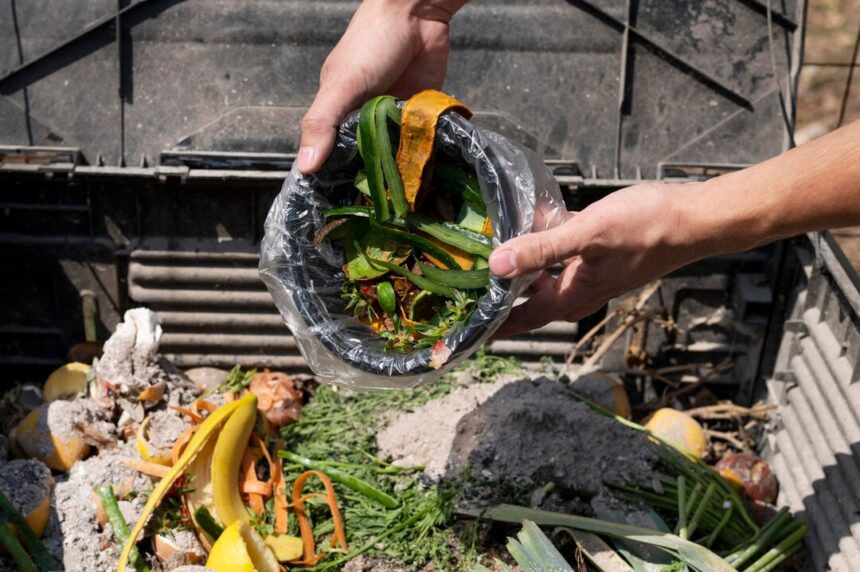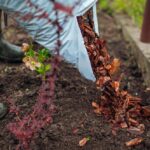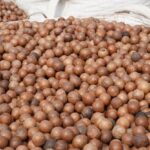In the quest for sustainable living and reducing waste, vermicomposting has emerged as a popular method for recycling organic materials and producing nutrient-rich compost. With the help of earthworms, kitchen scraps and other organic waste can be transformed into a valuable soil amendment known as vermicompost or worm castings. Let’s delve into the world of vermicomposting with worm bins and discover how you can turn your kitchen scraps into “black gold” for your garden.
What is Vermicomposting?
Vermicomposting is the process of using earthworms to decompose organic materials such as food scraps, paper, and yard waste, resulting in nutrient-rich compost known as vermicompost. The worms consume the organic matter, breaking it down into a form that is more readily available to plants and beneficial microorganisms.
Setting Up a Worm Bin:
To get started with vermicomposting, you’ll need a worm bin or vermicomposting system. This can be as simple as a plastic storage container or a specialized worm composting bin designed for this purpose. Here’s how to set up a basic worm bin:
- Choose a Container: Select a suitable container for your worm bin, such as a plastic storage tote or a wooden box with drainage holes.
- Prepare Bedding: Line the bottom of the bin with a layer of moistened bedding material such as shredded newspaper, cardboard, or coconut coir. This provides a habitat for the worms and helps to retain moisture.
- Add Worms: Introduce a population of composting worms, such as red wigglers (Eisenia fetida), to the bin. You can purchase worms from a local supplier or online. Start with a small number of worms and gradually increase the population as they multiply.
- Add Kitchen Scraps: Begin adding kitchen scraps and other organic waste to the worm bin. Suitable materials include fruit and vegetable scraps, coffee grounds, tea bags, eggshells, and shredded paper. Avoid adding meat, dairy, oily foods, and citrus fruits, as these can attract pests and create odors.
- Maintain Moisture and Aeration: Keep the bedding moist but not waterlogged, as worms require a damp environment to thrive. Monitor moisture levels regularly and add water as needed. Ensure adequate ventilation by drilling holes in the bin lid or sides to promote air circulation.
- Cover and Monitor: Cover the worm bin with a lid or breathable material to protect it from pests and excessive moisture loss. Check the bin periodically to monitor the progress of decomposition and adjust conditions as needed.
Benefits of Vermicomposting:
Vermicomposting offers numerous benefits for both the environment and gardeners:
- Reduces Waste: Vermicomposting diverts organic waste from landfills, reducing methane emissions and conserving valuable landfill space.
- Produces Nutrient-Rich Compost: Vermicompost is rich in essential nutrients, beneficial microorganisms, and enzymes that promote soil health and plant growth.
- Improves Soil Structure: Adding vermicompost to soil improves its structure, moisture retention, and aeration, creating a healthy environment for plant roots.
- Suppresses Plant Diseases: Vermicompost contains beneficial microbes and enzymes that help suppress plant diseases and pests, reducing the need for chemical fertilizers and pesticides.
- Enhances Plant Growth: The nutrients and beneficial microbes in vermicompost promote vigorous plant growth, increased yields, and improved crop quality.
Tips for Successful Vermicomposting:
- Balance Green and Brown Materials: Maintain a balance of green (nitrogen-rich) and brown (carbon-rich) materials in your worm bin to provide a nutritious diet for the worms and promote efficient decomposition.
- Avoid Overfeeding: Avoid overfeeding your worms, as excess food can lead to odors, acidity, and pest problems. Feed your worms small amounts of food regularly and adjust feeding rates based on their consumption.
- Monitor Temperature: Keep your worm bin in a location where temperatures remain between 55°F and 77°F (13°C and 25°C) to ensure optimal worm activity and decomposition rates.
- Harvest Compost Regularly: Harvest vermicompost from your worm bin periodically to make room for fresh bedding and prevent overcrowding. Use the finished compost to enrich garden soil, potting mixes, or homemade compost blends.
Vermicomposting with worm bins offers a simple yet effective way to recycle kitchen scraps, reduce waste, and create nutrient-rich compost for your garden. By harnessing the power of earthworms, you can turn organic materials into “black gold” that nourishes your plants and promotes a healthier, more sustainable ecosystem. Whether you’re a seasoned gardener or a novice enthusiast, vermicomposting is a rewarding and eco-friendly practice that anyone can enjoy.









